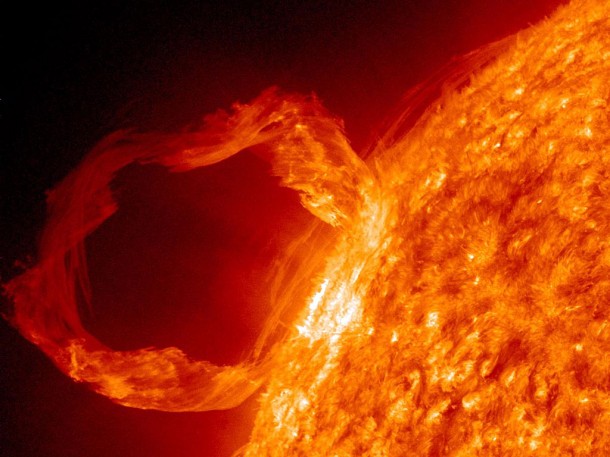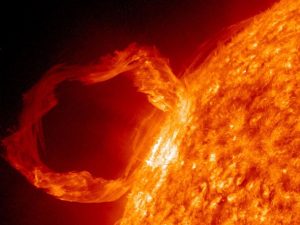
The University of Central Lancashire (UCLan) is playing a crucial role in the distribution of spectacular new pictures of the Sun which are now being captured by the recently-launched Solar Dynamic Observatory (SDO).
The images of the Sun captured by SDO are the equivalent to ten times the quality of high definition television. Stunning new images have now been released and can be viewed here (see also the AIA firstlight pages here).
Through UCLan the UK will have local access to the SDO data. The satellite’s telescopes will take eight of these high quality images every ten seconds, 24 hours a day, generating the equivalent of 1.1 terabytes of data daily. The extreme data-rate requires dedicated pipelines across the world. UCLan has set up a UK facility to provide such a data-hub for the UK research community. This will provide a unique gateway for the UK scientists to exploit the mission.
The new pictures show ‘the awe inspiring magnitude of the Sun’s power’. Commenting on the first images to be released by SDO, Dr Robert Walsh, UCLan Project Leader and University Director of Research, said: ‘I have been astounded at the clarity of these first images. They show us the awe inspiring magnitude of the Sun’s power through violent eruptions and solar storms at a quality we never thought possible. The incoming tidal wave of data is set to play a major role in enabling us to make the next leap forward in understanding our Sun-Earth connection. As the gate keeper of these images, UCLan will be making sure that our own scientists and those across the UK and Europe get immediate access to these unique solar movies.’
SDO is the first mission in NASA’s five year Living with a Star (LWS) Programme. Its unique orbit allows rapid, high-resolution images to be recorded providing in-depth information about the Sun’s magnetic field and solar activity, such as solar flares and eruptions from the solar atmosphere that define space weather.
For further media reports see The Times and BBC.
The Solar Dynamics Observatory has three instrument packages: The Atmospheric Imaging Assembly (AIA) will image the solar atmosphere in multiple wavelengths of light which can only be observed from space because they are completely blocked out by Earth’s atmosphere. It is this instrument that UCLan will be focusing upon. The Helioseismic and Magnetic Imager (HMI) will peer into the sun and map the Sun’s magnetic fields at the solar surface, as well as the plasma flows that generate magnetic fields deep in the Sun’s interior. The Extreme Ultraviolet Variability Experiment (EVE) will measure how much energy the sun emits at extreme ultraviolet wavelengths.
The UCLan SDO project is a collaboration between the Jeremiah Horrocks Institute and the Learning & Information Services section at the University.

Image: A prominence eruption imaged in unprecedented detail by SDO/AIA.
